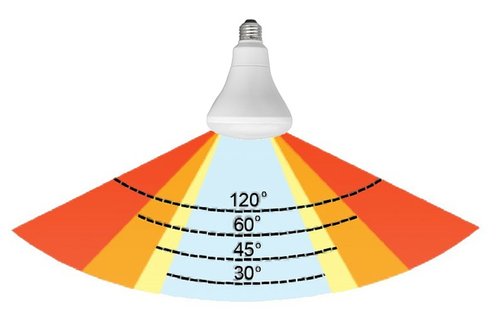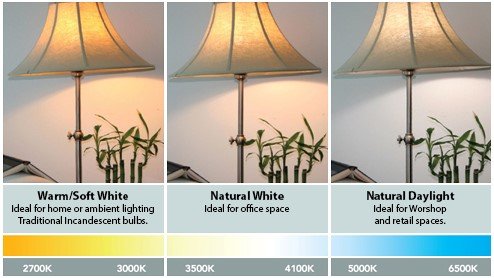What is a LED Linear Shop Light?
What is a beam angle?
The beam angle of an LED bulb is the angular dimension of the cone of light from the lamp. It encompasses the central part of the beam out to the angle where the intensity is 50 percent of maximum.

For most household ceiling fitted applications, a beam angle of 30 or 40 degrees would be sufficient. For outdoor applications, a wider beam angle of 60 to 120 degrees is preferred to cover a larger surface area.
What color temperature do I need?
Color Temperatures range from warm white to cool white.

- 2700K - 3000K – provides an ambient, intimate, and personal mood with its warm white light that is ideal for living rooms, family rooms, and hospitality environments.
- 3500K - 4100K – provides a clean and efficient neutral white light that is ideal for kitchen, bath, garage or commercial applications.
- 5000K - 6500K - provides a vibrant and alert cool white light that is ideal for commercial, industrial, and institutional applications.
What is the equivalent wattage to my fluorescent light?
| LEDs (Watts) | CFLs (Watts) |
|---|---|
| 4-5 | 8-12 |
| 6-8 | 13-18 |
| 9-11 | 18-22 |
| 12-14 | 23-31 |
| 15-22 | 32-54 |
Are LED shop lights suitable for outdoor use?
Most LED shop lights are engineered to bear the brunt of outdoor conditions. With water-resistant capabilities, some systems are equipped to function flawlessly even under rainfall or snowy conditions. However, it’s crucial to check for specific outdoor use certifications when you’re buying.
Are there any special disposal requirements for old or broken led shop lights?
The disposal process for LED lights is less complicated and less hazardous than traditional fluorescent or CFL bulbs. Unlike these older lighting options, LED shop lights do not contain harmful mercury.
However, they do contain electric components. This means you should not toss LEDs into regular trash bins. Local regulations regarding electronic waste may vary, so it’s wise to check with your city or county waste management facility.
Many communities have dedicated electronics recycling programs, and some retailers even offer take-back programs for used LED lights.
Do LED shop lights require any special maintenance or cleaning?
When it comes to cleaning, a simple dusting or wipe-down with a soft cloth is usually sufficient to keep your LED shop lights shining bright. Always ensure the light is switched off and is cooled down before cleaning to avoid any potential accidents.
Remember, using harsh chemicals or abrasive materials can damage the lights, so stick to gentle cleaning methods.
Do LED shop lights emit harmful UV rays?
No, LED shop lights are designed with your health and safety in mind. Unlike traditional lighting options, LED shop lights do not emit harmful ultraviolet (UV) radiation. This is because the energy efficient LED technology doesn’t rely on UV light to produce visible light.
Instead, they produce light within the visible spectrum, which is much safer for your health and won’t cause skin burns or eye injuries related to the UV exposure.





























